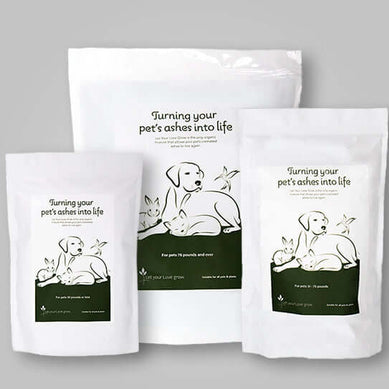Understanding In-Home Euthanasia Services: A Guide for Pet Parents By Matthew Cecil, Founder, Roughdaypets.com
Saying goodbye to a beloved pet is one of the most challenging experiences a pet parent can face. When the time comes, many families find comfort in the option of in-home euthanasia. This service allows pets to pass peacefully in the comfort of their own home, surrounded by loved ones. This article aims to guide pet parents through the in-home euthanasia process, explaining what to expect, how it differs from traditional vet visits, and how to make this difficult decision with compassion and care.
What is In-Home Euthanasia?
In-home euthanasia is a service provided by veterinarians where the euthanasia procedure is carried out in the pet’s home rather than a veterinary clinic. This approach is designed to minimize stress for the pet and provide a more personal, intimate setting for the family to say goodbye.
Many pet parents choose in-home euthanasia because it allows their pet to remain in a familiar environment, avoiding the anxiety and discomfort that can accompany a trip to the vet. This option can be particularly beneficial for pets that become anxious or fearful in unfamiliar settings, as well as for elderly or immobile pets that would have difficulty traveling to a clinic.
How Does In-Home Euthanasia Differ from Traditional Vet Visits?
The primary difference between in-home euthanasia and traditional vet visits is the setting. In-home euthanasia allows the procedure to be carried out in a place where the pet feels safe and comfortable. This can make the experience less stressful for both the pet and the parent.
Another significant difference is the level of personalization that in-home euthanasia offers. In a clinic, the procedure is typically performed in a clinical setting, with limited time and space for the family to grieve. In contrast, in-home euthanasia allows for a more private and personalized experience. Families can choose the time, place, and manner in which they wish to say goodbye, creating a peaceful and meaningful final moment with their pet.
In-home euthanasia also allows the family to be more involved in the process. The veterinarian will explain each step of the procedure and allow the family to be present and hold their pet if they wish. This level of involvement can provide a sense of closure and comfort, knowing that their pet was surrounded by love until the very end.
The In-Home Euthanasia Process: What to Expect
Understanding what to expect during the in-home euthanasia process can help alleviate some of the anxiety and uncertainty that many pet parents feel. While each veterinarian may have their own approach, the following is a general overview of what to expect during an in-home euthanasia appointment.
- Initial Consultation and Preparation: Before the appointment, the veterinarian will typically have a consultation with the pet parent to discuss the pet’s condition, answer any questions, and explain the euthanasia process. This consultation may take place over the phone or in person.
The veterinarian will also help the pet parent prepare for the appointment. This may include discussing where the procedure will take place, who will be present, and any special requests the family may have.
- Arrival of the Veterinarian: On the day of the appointment, the veterinarian will arrive at the pet’s home with all the necessary equipment and medications. The veterinarian will take the time to greet the pet and allow them to become comfortable with their presence.
- Sedation: To ensure that the pet is calm and comfortable, the veterinarian may administer a sedative before the euthanasia procedure. The aim of the sedative is to help the pet relax and drift into a peaceful sleep. The sedative is typically given as an injection, and the pet parent can hold or comfort their pet during this time. Your veterinarian may advise that a sedative is not always appropriate or needed: it is an individual decision. Some pets are already calm and relaxed, and there are some possible down sides to sedation. Sedatives occasionally cause adverse effects (such as vomiting) and they may reduce the blood pressure, making it more difficult for the veterinarian to find the vein for the final injection. So, this is a topic that is often discussed between you and your veterinarian beforehand.
- Euthanasia Procedure: Once the pet is sedated and peaceful, the veterinarian will administer the euthanasia solution, typically through an intravenous injection. This solution causes the pet to pass away quickly and painlessly. The pet parent can continue to hold or comfort their pet throughout the procedure.
- Aftercare: After the pet has passed, the veterinarian will confirm the pet’s passing and allow the family time to say their final goodbyes. The veterinarian will then discuss aftercare options, which may include cremation, burial, or other memorial services.
Many veterinarians who offer in-home euthanasia also provide resources and support for pet parents coping with grief, including counseling services, support groups, and memorial options.
Making the Decision: Is In-Home Euthanasia Right for Your Pet?
Deciding when and how to say goodbye to a pet is an incredibly personal and difficult decision. In-home euthanasia may be the right choice for pet parents who want to provide their pet with a peaceful and comfortable passing in a familiar environment.
When considering in-home euthanasia, it’s important to think about your pet’s quality of life. If your pet is experiencing pain, discomfort, or a significant decline in their ability to enjoy life, euthanasia may be a compassionate option to prevent further suffering.
It’s also important to consider your own emotional needs and those of your family. In-home euthanasia allows for a private and personalized experience, giving you the opportunity to say goodbye in a way that feels right for you and your loved ones.
If you’re unsure whether in-home euthanasia is the right choice, it can be helpful to speak with your veterinarian. They can provide guidance and support, helping you make an informed decision based on your pet’s condition and your family’s needs.
The Benefits of In-Home Euthanasia
In-home euthanasia offers numerous benefits for both pets and their parents. Some of the key benefits include:
- Reduced Stress for the Pet: Pets are often more comfortable and less anxious in their own home. In-home euthanasia allows them to remain in a familiar environment, surrounded by their favorite toys, blankets, and family members.
- Personalized Experience: In-home euthanasia allows for a more personalized and meaningful experience. Families can choose the time, place, and manner in which they say goodbye, creating a peaceful and memorable final moment with their pet.
- Comfort for the Family: In-home euthanasia provides a private and intimate setting for the family to grieve. Families can be present throughout the entire process, providing comfort and support to their pet until the very end.
- Closure: Being present during the euthanasia process can provide a sense of closure for pet parents. Knowing that their pet passed away peacefully and without suffering can help bring a sense of peace and comfort during the grieving process.
Choosing the Right Veterinarian for In-Home Euthanasia
Choosing the right veterinarian to perform in-home euthanasia is an important decision. It’s essential to find a veterinarian who is experienced, compassionate, and understanding of the emotional nature of the procedure.
When selecting a veterinarian, consider the following factors:
- Experience: Look for a veterinarian who has experience performing in-home euthanasia. An experienced veterinarian will be able to provide a calm and compassionate experience for both you and your pet.
- Compassion: The veterinarian should be compassionate and empathetic, understanding the emotional weight of the decision and providing support throughout the process.
- Communication: Good communication is key. The veterinarian should be willing to answer all of your questions, explain the process in detail, and provide guidance on how to prepare for the appointment.
- Availability: In-home euthanasia appointments may need to be scheduled on short notice, especially if your pet’s condition is rapidly declining. Choose a veterinarian who is flexible and able to accommodate your needs.
How to Prepare for In-Home Euthanasia
Preparing for in-home euthanasia can help make the process as peaceful and stress-free as possible. Here are some tips for preparing for the appointment:
- Choose a Comfortable Location: Decide where you want the procedure to take place. This could be your pet’s favorite spot in the house, such as their bed, a sunny spot by the window, or a quiet area in the garden.
- Gather Family Members: If other family members or friends want to be present, make sure they are aware of the time and place of the appointment. Discussing the process with them beforehand can help everyone feel more prepared.
- Create a Peaceful Environment: Consider creating a calm and soothing environment by playing soft music, lighting candles, or bringing out your pet’s favorite toys and blankets.
- Prepare Yourself Emotionally: Saying goodbye to a pet is never easy. Take time to prepare yourself emotionally for the appointment. It’s okay to feel a range of emotions, including sadness, guilt, and relief. Remember that you are making this decision out of love for your pet.
- Plan for Aftercare: Decide in advance what you would like to do with your pet’s remains. Discuss your options with the veterinarian, whether you choose cremation, burial, or another form of memorialization.
Coping with Grief After Euthanasia
Grieving the loss of a pet is a natural and important part of the healing process. Every pet parent’s grief journey is unique, and there is no right or wrong way to grieve. It’s important to give yourself permission to feel your emotions and to seek support if needed.
Here are some tips for coping with grief after euthanasia:
- Allow Yourself to Grieve: It’s okay to feel sad, angry, or lost after losing a pet. Allow yourself to experience these emotions and take the time you need to heal.
- Seek Support: Don’t be afraid to reach out for support from friends, family, or a professional counselor. Many communities also have pet loss support groups where you can connect with others who have experienced a similar loss.
- Create a Memorial: Creating a memorial for your pet can be a meaningful way to honor their memory. This could include planting a tree, creating a photo album, or holding a small ceremony in their honor.
- Remember the Good Times: Focus on the positive memories you shared with your pet. Reflecting on the joy and love they brought into your...life can bring comfort during this difficult time.
Finding the Best Euthanasia Veterinarians on Rough Day Pets
When the time comes to make the difficult decision of euthanasia, finding the right veterinarian is crucial. Rough Day Pets is a platform dedicated to helping pet parents connect with top-rated euthanasia veterinarians who provide compassionate and professional care. The platform also offers invaluable end-of-life advice and resources to support pet parents through this challenging period.
Rough Day Pets is committed to ensuring that your pet receives the highest quality of care during their final moments, allowing you to focus on what matters most—saying goodbye in a way that honors the love and bond you shared with your pet. By using Rough Day Pets, you can find a veterinarian who understands the emotional significance of in-home euthanasia and who will guide you through the process with empathy and respect.
For more information and to find a trusted euthanasia veterinarian in your area, visit Rough Day Pets. Here, you’ll find a community dedicated to supporting pet parents through every step of the end-of-life journey, providing the guidance and care needed to make this difficult time as peaceful as possible.










